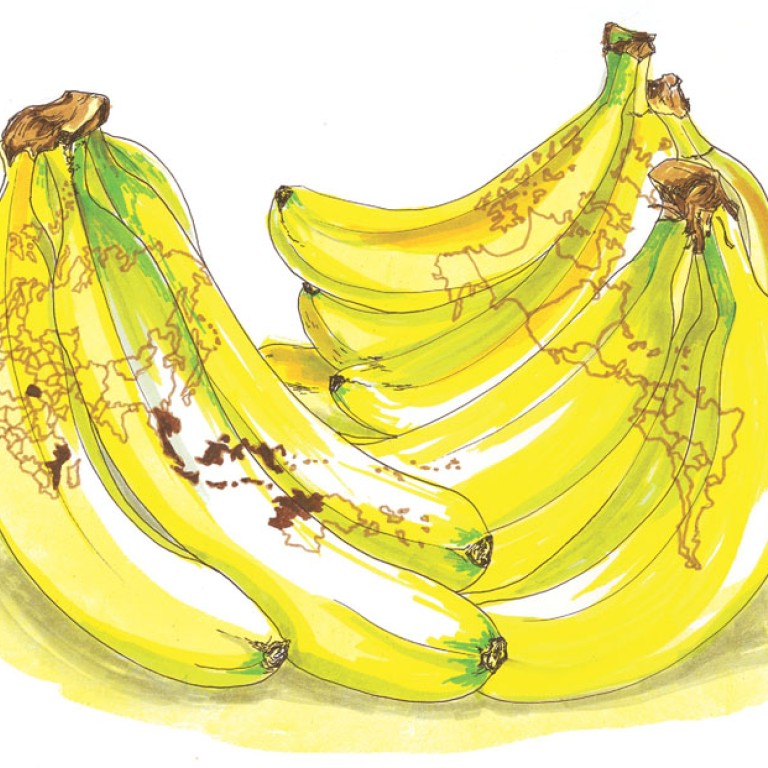
Panama TR4 fungus threatens to wipe out 90pc of world's bananas
Scientists say that up to 90 per cent of the Cavendish variety of banana, which makes up the vast majority of global market, may be wiped out
If you are reading this at your breakfast table, with a bunch of bananas in front of you, you should consider yourself lucky. Because bananas may soon disappear from your life, say some scientists. They are predicting a "bananageddon" in which 90 per cent of the bananas you see in the market today will be wiped out.
The culprit is a fungus called Panama Tropical Race 4, which affects Cavendish banana trees. There are many varieties of banana, but the Cavendish commands more than 90 per cent of world trade, and until now they were resistant to most fungi.
But the Fusarium wilt caused by Panama TR4 is changing all that. The fungus played havoc in Malaysia in the early 1990s. The Philippines, the only Asian country to rival the top Latin American exporters, is facing a major assault by the fungus, while banana growing areas in southern China are also under attack.
After being confined to Asia and northern parts of Australia, the fungus has jumped continents, surfacing in Jordan and Mozambique at the end of last year. This prompted the United Nations Food and Agricultural Organisation to issue a warning earlier this month as they called for urgent measures.
So far there has been no report of the fungus yet from Ecuador, Costa Rica or Colombia, which grow the bulk of bananas that reach supermarkets across the world.
But Randy Ploetz, professor of plant pathology at the University of Florida is not hopeful. He says the fungus may already be in Latin America. "The story on the Mozambique situation was that workers brought over to establish the plantations - some of them were from Latin America," he said. As the fungus can spread through a small clump of dirt attached to a boot or a tool used on an infected farm, one can see why Ploetz is sceptical.
If the Cavendish is wiped out, we don't have another variety of banana to replace it as a mass commercial crop.
"There are hundreds of banana varieties," Dan Koeppel, author of , told the by phone from Los Angeles. "But with global economic development and urbanisation, supermarkets have become the main outlet from where consumers get their bananas. That made the Cavendish variety banana as they are the most suited for transport and storage across long distances."
The increase in demand for the variety also saw other strains replaced by the Cavendish in banana farms across the world.
Fruit corporations turned to the Cavendish in the 1950s only when a similar fungus, called Panama TR1, threatened the Gros Michel, the top breed at the time.
Nicknamed the "Big Mike", the Gros Michel was sturdier, bigger and tastier than the Cavendish and almost the only banana sold in America until the 1950s. When the fungus started decimating banana plantations, the big growers switched to Cavendish as it could withstand TR1.
Soon the Cavendish, seen as an inferior Asian variety by the planters until then, covered 45 per cent of global cultivation and 95 per cent of exports. Countries like India, Pakistan and Thailand grow other breeds but they are mostly consumed domestically. The effect of the TR4 fungus on different varieties is unknown as studies are still under way.
After the TR1 crisis ended, there was no worthwhile effort made to create a breed that could withstand future attacks. This made the Cavendish a dominant but vulnerable species. The danger of such a monoculture is illustrated by the infamous potato famine in Ireland (see box).
But it is now too late for a new breed to be developed with resistance to TR4 that is sturdy enough to replace Cavendish bananas in the near future. Moreover a global, co-ordinated front against the disease is yet to take shape, which the FAO noted in its warning.
Some scientists believe genetic modification is the easiest way to tackle the issue but that solution does not find favour universally. Moreover consumers may not accept a GM banana.
"I am not a supporter of GM food," said Koeppel. "But if there is one species that needs genetic modification, it is bananas. Moreover as it doesn't pollinate, the chance of accidental cross-contamination also is avoided."
Koeppel added that the crisis may spur entrepreneurs in Asia to develop methods to store and transport different varieties of banana that are grown in the region to challenge the Cavendish monopoly in the global market.
A lesson from the Irish famine
Reliance on a single breed of any crop species can end up in a disaster. The lack of genetic diversity makes each clone-like plant vulnerable to the same kind of infestation, with devastating results.
No episode in history better illustrates this than the Irish potato famine of 1850s. Across the country, farmers relied on a single variety of the tuber, called Irish lumper. While the lumper was not exactly the best-tasting variety, it was remarkably fertile, with a higher per-acre yield than other varieties.
But when a fungus called arrived accidentally from North America, it encountered virtually no natural resistance from these Lumper crops.
Farm after farm fell to this potato blight, and the ensuing famine wiped out one million people between 1845 and 1852. As much as one quarter of Ireland's population either fled or died.
An earlier version of this story referred to TR4 as a virus. It should be "fungus".

